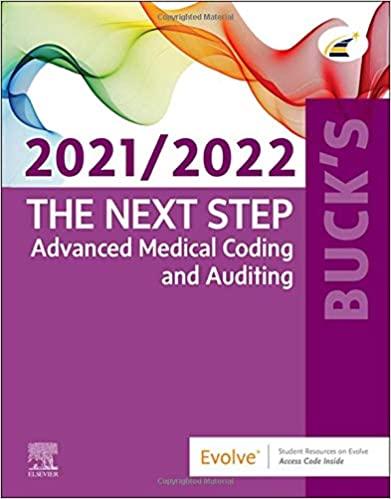how can a one cent error cause a IRS penalty? Is it not immaterial?
tcr tompieting and discussi ng this case, you should be able to: Appreciate the value of bank reconciliations. Understand that materiality is not important in a fraud investigation Understand the purpose of a proper cut-off date. A bar/restaurant that an accounting firm serviced for a number of years (compiling quarterly financial statements and preparing the annual tax returns) was audited by the IRS with an audit that was not a regular field audit. This Taxpayer Compli- ance Measurement Program (TCMP) audit (United States General Accounting Office, 1994) is now called the National Research Program (NRP; Department of the Treasury, Internal Revenue Service, 2005) and is used by the IRS to develop the statistical basis for selecting audit targets. This type of examination checks everything-including every number and every other representation (such as proof of incorporation, stock ownership, and citizenship) After working on the audit for about a week, the IRS agent gave the CPA partner a list of questions which included a request to explain a one cent error in the bank reconciliation for the prior year-end (the compiled financial state- ments for the first quarter of the current year had not yet been prepared). When the accountant looked at the reconciliation, he saw that a staff accountant had reconciled the account and that the "checker," a CPA with 30 plus years of ex- perience, had passed" the reconciliation even though it was out of balance by quarterly financial statements and preparing the annual tax returns) was audited by the IS with an audit that was not a regular field audit. This Taxpayer Compli- ance Measurement Program (TCMP) audit (United States General Accounting Office, 1994) is now called the National Research Program (NRP; Department of the Treasury, Internal Revenue Service, 2005) and is used by the IRS to develop the statistical basis for selecting audit targets. This type of examination checks everything-including every number and every other representation (such as proof of incorporation, stock ownership, and citizenship) After working on the audit for about a week, the IRS agent gave the CPA partner a list of questions which included a request to explain a one cent error in the bank reconciliation for the prior year-end (the compiled financial state- ments for the first quarter of the current year had not yet been prepared). When the accountant looked at the reconciliation, he saw that a staff accountant hacd reconciled the account and that the "checker," a CPA with 30 plus years of ex- perience, had "passed" the reconciliation even though it was out of balance by one cent. He had written "Passed-Immaterial" on the reconciliation So the partner stayed at the office late that night and re-reconciled the ac- count. What he found was disturbing and cost him his first and only IRS penalty for which he was (in 34 years of practice) responsible. How can a one cent error cause an tcr tompieting and discussi ng this case, you should be able to: Appreciate the value of bank reconciliations. Understand that materiality is not important in a fraud investigation Understand the purpose of a proper cut-off date. A bar/restaurant that an accounting firm serviced for a number of years (compiling quarterly financial statements and preparing the annual tax returns) was audited by the IRS with an audit that was not a regular field audit. This Taxpayer Compli- ance Measurement Program (TCMP) audit (United States General Accounting Office, 1994) is now called the National Research Program (NRP; Department of the Treasury, Internal Revenue Service, 2005) and is used by the IRS to develop the statistical basis for selecting audit targets. This type of examination checks everything-including every number and every other representation (such as proof of incorporation, stock ownership, and citizenship) After working on the audit for about a week, the IRS agent gave the CPA partner a list of questions which included a request to explain a one cent error in the bank reconciliation for the prior year-end (the compiled financial state- ments for the first quarter of the current year had not yet been prepared). When the accountant looked at the reconciliation, he saw that a staff accountant had reconciled the account and that the "checker," a CPA with 30 plus years of ex- perience, had passed" the reconciliation even though it was out of balance by quarterly financial statements and preparing the annual tax returns) was audited by the IS with an audit that was not a regular field audit. This Taxpayer Compli- ance Measurement Program (TCMP) audit (United States General Accounting Office, 1994) is now called the National Research Program (NRP; Department of the Treasury, Internal Revenue Service, 2005) and is used by the IRS to develop the statistical basis for selecting audit targets. This type of examination checks everything-including every number and every other representation (such as proof of incorporation, stock ownership, and citizenship) After working on the audit for about a week, the IRS agent gave the CPA partner a list of questions which included a request to explain a one cent error in the bank reconciliation for the prior year-end (the compiled financial state- ments for the first quarter of the current year had not yet been prepared). When the accountant looked at the reconciliation, he saw that a staff accountant hacd reconciled the account and that the "checker," a CPA with 30 plus years of ex- perience, had "passed" the reconciliation even though it was out of balance by one cent. He had written "Passed-Immaterial" on the reconciliation So the partner stayed at the office late that night and re-reconciled the ac- count. What he found was disturbing and cost him his first and only IRS penalty for which he was (in 34 years of practice) responsible. How can a one cent error cause an








